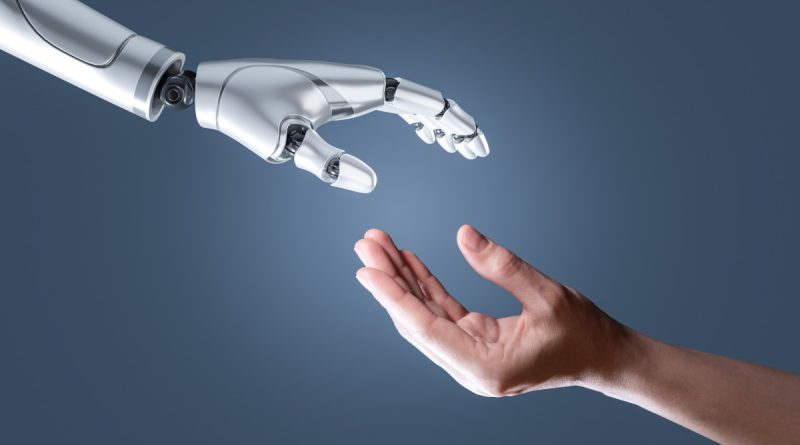rewrite this title Humanoids: Embracing the Future of Technology
Rodney Brooks, a prominent roboticist and co-founder of iRobot, has expressed concerns about a possible investment bubble in humanoid robots, a sentiment shared by many industry professionals.
In a recent article, Brooks emphasizes the substantial venture capital flowing into humanoid robotics firms like Figure. He contends that, despite the considerable financial support, humanoid robots still lack the needed dexterity for practical applications, making them largely ineffective.
This viewpoint may surprise some venture capitalists backing this technology, but it aligns with feedback from various investors and AI experts focused on robotics. They recently shared their thoughts with TechCrunch, signaling that the widespread adoption of humanoid robots could be over a decade away.
The Challenges
Fady Saad, a general partner at Cybernetix Ventures—a VC firm dedicated to robotics—and co-founder of MassRobotics, informed TechCrunch that he perceives limited immediate market opportunities for humanoids, except for roles like astronaut substitutes in space.
“Those who are unaware of humanoids or are not closely following advancements may find current developments impressive; however, we remain cautiously skeptical about their practical uses and revenue prospects,” Saad remarked.
He also raised concerns regarding safety, especially in environments where humans and humanoid robots coexist. Risks could arise in places like factories where humanoids work alongside people; these concerns amplify when humanoids are considered for home use, a key market for numerous companies.
“If one of these robots were to fall onto children or pets, it could lead to serious injuries,” Saad cautioned. “This is just one of many significant challenges commonly overlooked. Additionally, how comfortable would people feel having a humanoid simply sitting in their home? What if it were hacked? What if it acted unpredictably at night and caused damage?”
TechCrunch Event
San Francisco
|
October 27-29, 2025
The timeline for advancing this technology remains uncertain, which is crucial for venture capitalists assessing fund lifecycles and anticipated returns for their investors.
The Timeline
Sanja Fidler, vice president of AI research at Nvidia, noted in an August discussion with TechCrunch that establishing a clear timeline for humanoid development is complex, with current excitement resembling the initial fervor around self-driving cars.
“Think back to the self-driving car industry in 2016 and 2017; it seemed like tangible progress was being made, didn’t it?” Fidler reflected. “Yet, it took several more years for the technology to advance, and as of now, no one has achieved full global autonomy. It’s a complicated task.”
Nvidia’s chief scientist Bill Dally supported these points in an interview with TechCrunch, emphasizing the necessity of investments to bolster the infrastructure for humanoid developers.
Seth Winterroth, a partner at Eclipse, pointed out that while fresh advancements and demonstrations can be thrilling, humanoids are inherently complex. He argues that more time is needed for them to reach their full potential.
“Implementing software updates for systems with six degrees of freedom is already quite challenging; many of the humanoids we discuss involve systems with over 60 degrees of freedom,” Winterroth elaborated on robotic movement capabilities. “Additionally, achieving feasible unit economics is essential for a viable business model. We still have a considerable journey ahead.”
In many cases, humanoid robots are not yet ready for mainstream use.
Tesla illustrates the hurdles faced by companies in this sector. The company unveiled its humanoid project, Optimus, in 2021, projecting a launch date of 2023.
That announcement did not come to fruition. When the bot finally made an appearance in 2024 during Tesla’s “We, Robot” event, it was revealed that much of its operation was controlled by off-screen human operators. The company now expects to start selling these robots in 2026.
Robotics startup Figure, recently valued at $39 billion following a funding round in September, has also faced scrutiny concerning the actual number of humanoids it has deployed, a claim the company staunchly defends.
What is Progressing
However, this doesn’t mean that humanoids lack future market potential, nor does it imply that pursuing this technology is unwarranted.
Brooks himself is optimistic about the eventual emergence of humanoids. However, rather than resembling the human-like shapes often imagined, he believes they will likely come equipped with wheels and non-humanoid features, potentially appearing within a decade or more.
Many companies are spearheading innovations in dexterity technology, the achievement of which Brooks questions for humanoids. This includes Proception, supported by Y Combinator, and Loomia, which has developed a kit to assist robotics firms in integrating touch into their devices.
Several humanoid companies are already accepting orders and generating interest in their robots. K-Scale Labs received over 100 preorders within the first five days for its humanoid bot, a delightful surprise for its founders, as noted by CEO Benjamin Bolte to TechCrunch.
Hugging Face has also experienced notable demand for its two humanoid robots. The company began accepting preorders for its smaller desktop model, Reachy Mini, in July, witnessing remarkable response. Within just five days of the launch, Hugging Face reported $1 million in sales for its Reachy Mini robots.



